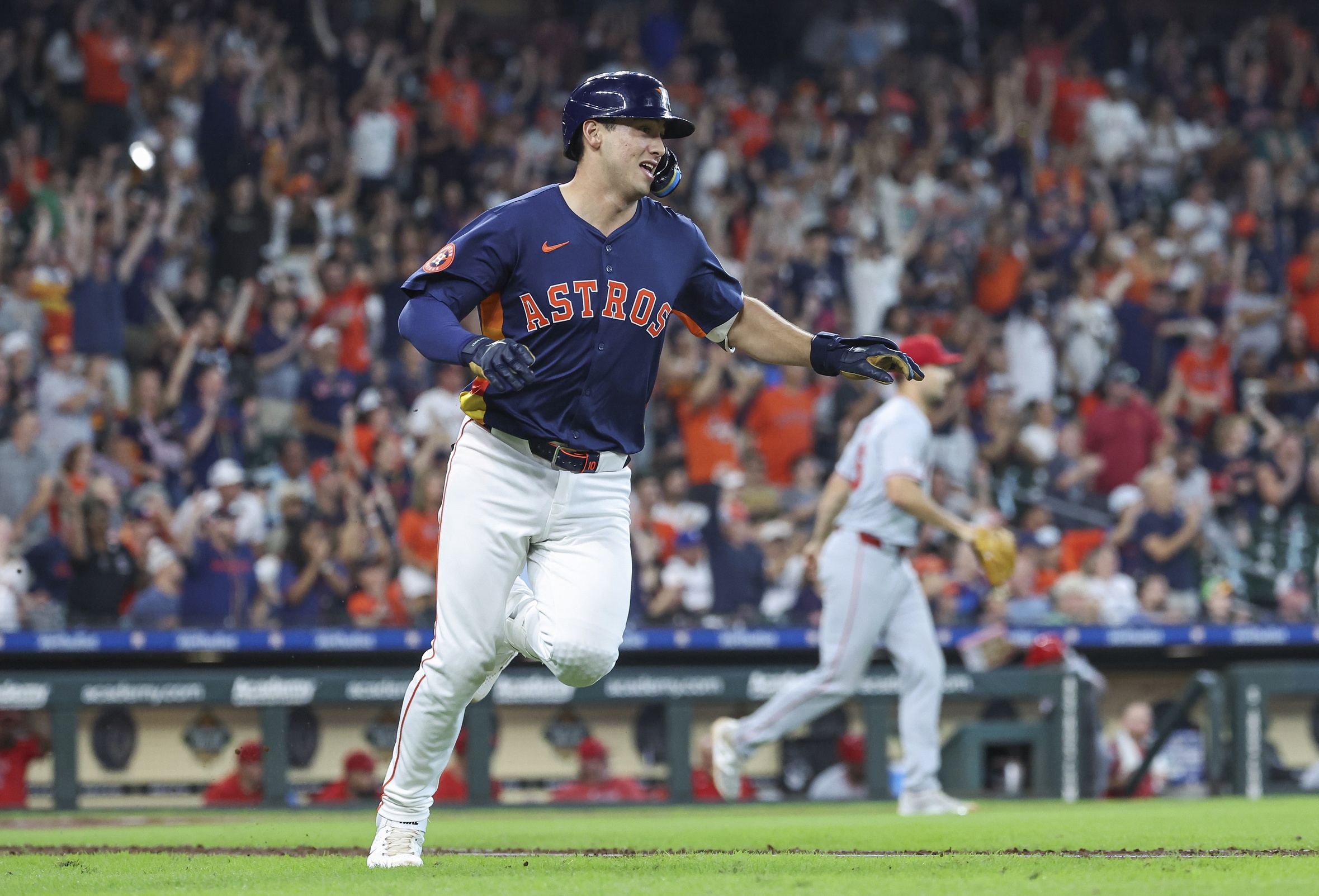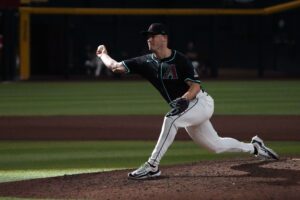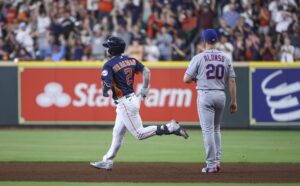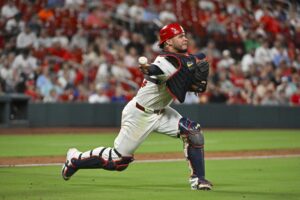The wild card round of the postseason has concluded, with some very telling results. Three out of the four losers got swept out of the playoffs, two of them at home. In fact, the high-powered Baltimore Orioles only scored one total run against the Kansas City Royals in two games in front of their home crowd.
The Houston Astros, stricken with injuries throughout the year, were swept by a hot and streaky Detroit Tigers club. The New York Mets pulled off one of the most memorable playoff comebacks in recent memory against the Milwaukee Brewers. Last, but certainly not least, the San Diego Padres easily pushed over a less-than-stellar Atlanta Braves team.
As the losing clubs hang up their cleats for the season and put their gloves in the lockers, the question now becomes: what can they do to not lose so early next year? How do they address the most glaring issues with their team? What spark can they go and grab from their farm systems to inject some life for their next October run? Here is one prospect from each team that can provide that spark for next year, and perhaps beyond.
One Prospect Who Will Help Each Wild Card Loser in the Future
Astros: OF Shay Whitcomb (#14 Organizational Prospect)
2024 (Triple-A): .293/.378/.908, 19 doubles, 2 triples; 25 home runs, 91 RBIs, 53 BB to 95 K, 26 SB
The Astros’ hitting during the season was good, ranking first in hits and batting average. At the same time, they struck out at the second-lowest rate while having the second-highest OBP in the American League.
However, their lineup during the Wild Card round was awful. The final slash line from the team was .194/.271/.481, outplayed in every single category against the Tigers. To make matters worse, only one of those hits was an extra-base hit, a double from Yordan Alvarez. Only four of their batters hit over the Mendoza line as well.
A spark in their batting is necessary, which is where Shay Whitcomb comes in. We’ve already discussed the outfielder’s potential before the wild card, but after this performance, his bat is no longer a desire, it’s a need.
As we wrote about, the 26-year-old had his career-best in batting average and OPS. He also cut his strikeout rate significantly this past year. He can hit for gap and raw power while stealing bases to put a runner in scoring position.
Whitcomb can also bring home runners in scoring position while batting, which would have helped boost the team’s 3-for-13 RISP statistic, and helped drive in some of the 14 men left on base during the series.
In fact, Whitcomb’s performance ended up in a Most Valuable Player Award in the Triple-A Championship.
It should be noted, once again, that Whitcomb had a slow but productive start to his MLB career. Going 9-for-41, he did drive in five runners while hitting three doubles, while also walking five times. He wasn’t great, but he looked comfortable enough.
Whitcomb will likely make the roster in 2025 out of spring training. If he can produce at the level he did in Triple-A, the Astros might advance into the next round in 2025. Pitching can do you good, but runs matter at the end of the day.
Orioles: OF Dylan Beavers (#6 Organizational Prospect)
2024 (Two Teams): .242/.342/.750, 20 doubles, 5 triples, 15 home runs, 54 RBI, 68 BB to 125 K, 31 SB
The Orioles were looking to make a much bigger impact in the postseason following their quick exit to the Texas Rangers in the American League Division Series last year. Instead, they played worse than before, especially at the plate.
The team batted a dismal .167/.225/.468, worse than the Astros, despite the team pitching a 1.50 ERA and a 1.11 WHIP. Outside of Cedric Mullins, who hit one double and a home run, the team cumulatively had one double during their two-game series. Last year, it was the pitching. This year, it was the batting.
Dylan Beavers offers the most MLB-ready profile that could quickly adapt to the pro level for next year.
It seems the 23-year-old is trading some of his early contact skills for more raw power. While his average and OBP went to his lowest in his three-year pro career, he had the most home runs in one season, while nearly eclipsing his 2023 RBI high of 60. This alone has kept his slugging above .400.
However, the downside to Beavers’ new profile is his increasing strikeout rate, hovering near 30%, and now striking out more often than getting a hit. His walk rate has stabilized, indicating his eye has not changed or improved with his new approach. This might be a problem for Beavers if this doesn’t improve next year.
His base stealing is important, as his regular season total would be the second-highest on the current team. He would be just behind Mullins, who had 32 stolen bases, but none in the Wild Card round.
With only six games under his belt in Triple-A, Beavers will likely start at that level in 2025. There are also a number of players that one could argue are better suited for the promotion, such as Samuel Basallo and Coby Mayo, but for a team that has been swept out of the playoffs two years in a row, proven talent is required.
Brewers: RHP Jacob Misiorowski (#80 Overall Prospect)
2024 (Two Teams): 3-5, 3.33 ERA, 97 1/3 IP, 60 BB and 57 hits (1.202 WHIP), 127 K (14 K/9), 8 HR (.9 HR/9), .167 OBA
The Brewers’ starting pitching did a fine job giving their batting a strong outing, while their offense put up runs when needed. However, their bullpen completely let them down when it mattered most.
In Game 1, Aaron Ashby failed to record a single out, surrendering three hits and two walks while giving up two runs. Joel Payamps gave up two hits and a walk, while also surrendering three runs. In Game 3, Devin Williams, who was the star closer, melted down in the 9th inning, surrendering a three-run homer to Pete Alonso and a single that scored Jesse Winker.
If the team was desperate for arms and needed reinforcements, Jacob Misiorowski might have been the best and smartest play.
The 23-year-old 6’7″ right-hander may have an issue with control, but he can generate strikeouts. According to MLB Pipeline, the Junior College product has a high-grade fastball and slider combination, along with a curveball and developing changeup.
In his last 170 innings, Misiorowski has struck out 240 batters, a K/9 average near 14. He also seems to generate little to no solid contact, sporting a lifetime .168 opposing batting average.
Again, the only issue for Misiorowski is his control. He issued 60 walks last year, and 109 lifetime, an average of five walks per nine innings. In addition, he served up eight home runs over 97 1/3 innings of work. That is a much faster clip than the two through 71 1/3 innings last year. His groundout-flyout rate went over one, meaning he’s giving up more fly balls.
Misiorowski should spend some of his 2025 season in Triple-A working on control and getting his groundout rate back under one. He did record his first career save in 2024, meaning they are likely adjusting him to the bullpen. For a team who just watched their bullpen destroy their season, an arm like his is certainly welcomed.
Braves: C Drake Baldwin (#5 Organizational Prospect)
2024 (Two Teams): .276/.370/.793, 19 doubles, 1 triple, 16 home runs, 88 RBI, 72 BB to 95 K, 2 SB
The Braves secured a postseason spot in the last possible game against the Mets, setting up a date with the Padres. For a team that was devastated by the ACL injury to Ronald Acuna Jr., along with a slump year from Matt Olson, it was surprising to see them here again.
The team, however, had the most issues out of any Wild Card losers this year. Both starting pitchers, Max Fried and AJ Smith-Shawver, put the team in an early hole in both games. Their batting went a measly .197/.206/.524, the third worst out of all the losing teams. We can talk about all of their problems, but their farm system is growing quite thin and hasn’t been as impressive as in years past. Drake Baldwin might be the best option to address just one of the bigger issues here.
The one thing for a young prospect to show is consistency in the hopes of playing in the majors. Baldwin has this consistency, even more so than the four Braves prospects ranked him.
While his OBP has dropped slightly, his batting average hit a high in 2024. Meanwhile, his slugging remained average despite netting 129 hits. In addition, Baldwin has a nice split between gap and raw power, hitting 19 doubles and 16 home runs. He can drive in runs, however, something Atlanta struggled to do against San Diego until the second game.
While he hits more than he strikes out, he also nearly matches his strikeout total with walks. His walk rate has remained between 15-20% over the last three seasons, meaning his eye has adjusted nicely with each and every level. With Travis d’Arnaud aging and Sean Murphy struggling, Baldwin might be a nice substitute behind the plate.
He could break camp in 2025, but don’t be surprised if he’s assigned to Triple-A for some more seasoning. For a team that had multiple issues during the wild card, adding a new, fresh bat is a good first step.
Photo Credit: © Troy Taormina-Imagn Images






